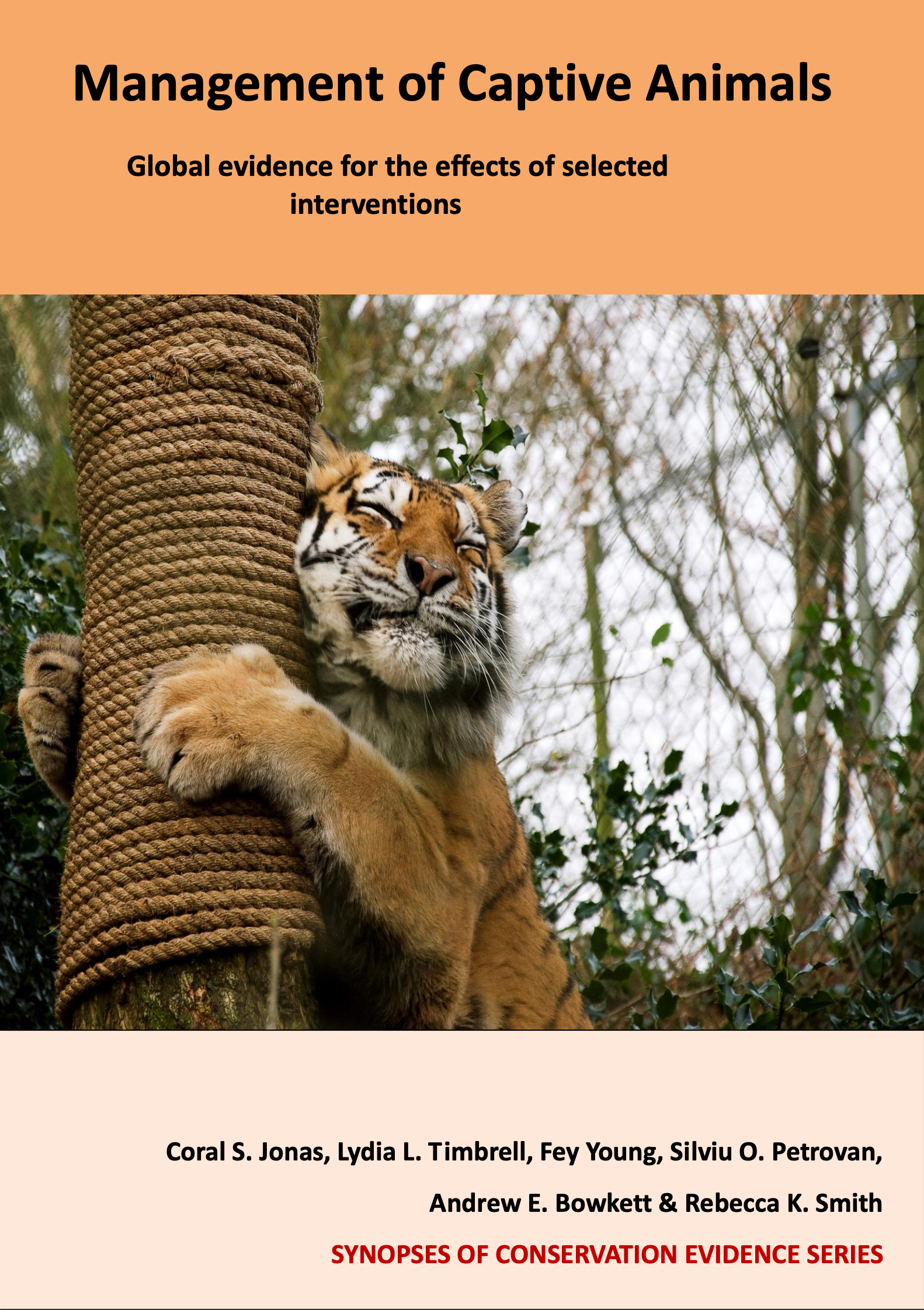Primates: Provide live invertebrates
-
Overall effectiveness category Likely to be beneficial
-
Number of studies: 1
View assessment score
Hide assessment score
How is the evidence assessed?
-
Effectiveness
85% -
Certainty
50% -
Harms
0%
Supporting evidence from individual studies
A before-and-after study in 2015 in the UK (Williams et al. 2015) found that when live insect prey were provided to captive loris Loris lydekkerianus nordicus inactivity was reduced and foraging increased to levels seen in wild lorises. Average inactivity time reduced from an average of 46% to 29% (wild loris averaged 43%) and average foraging time increased from 9% to 24% (wild loris averaged 27%). In addition, a significant increase in postures used in foraging in the wild and a wider behavioural repertoire was seen by recording positional behaviours. Observational data was collected over five consecutive days at five-minute intervals over six hours/day for each of the five animals for each of three conditions: pre-enrichment (usual diet); enrichment (usual diet plus live insects); and post-enrichment (usual diet). Approximately 200 crickets were scattered into an indoor enclosure at 10:00 h over the five days of the enrichment condition (approximately 40 each day) in addition to their normal diet. (CJ)
Study and other actions tested
Where has this evidence come from?
List of journals searched by synopsis
All the journals searched for all synopses
This Action forms part of the Action Synopsis:
Management of Captive Animals
Management of Captive Animals - Published 2018
Captive Animal Synopsis





)_2023.JPG)














